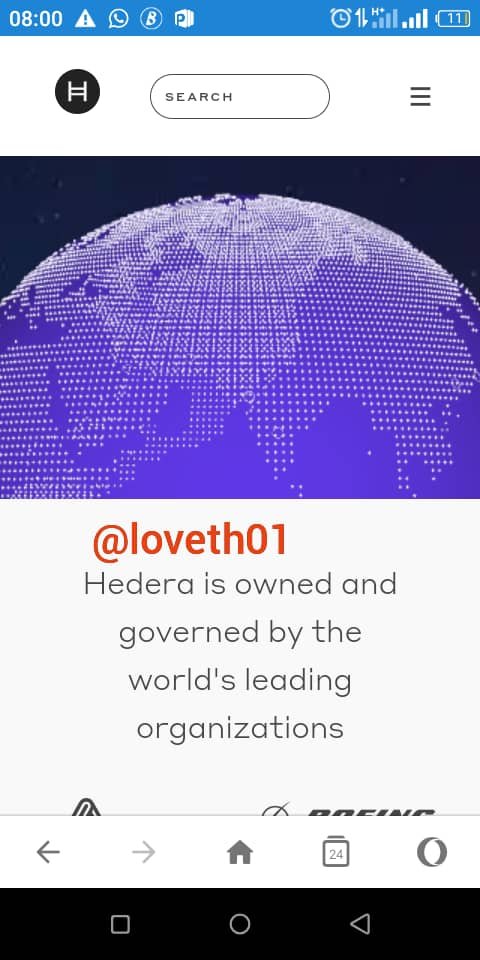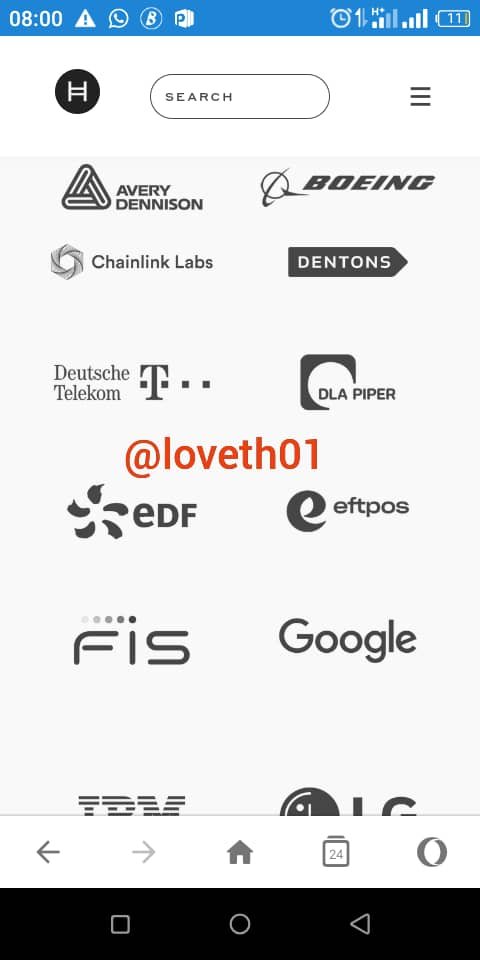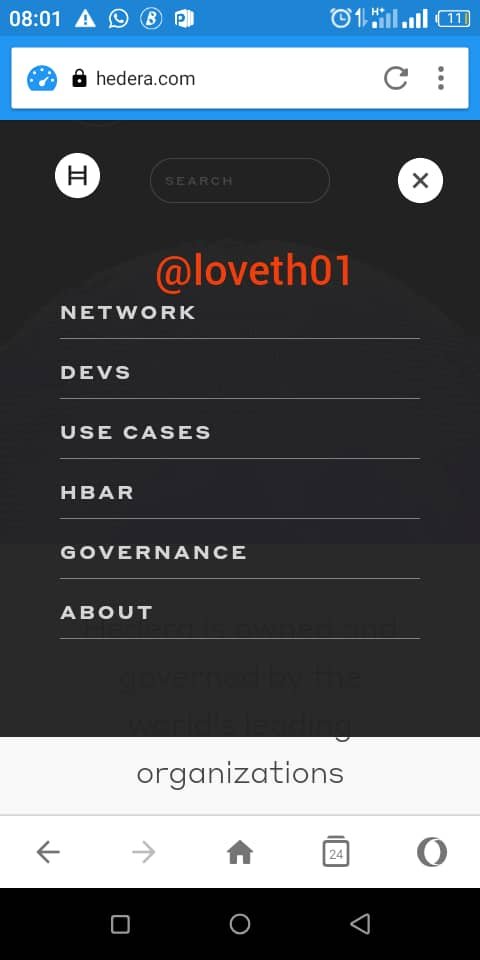Crypto Academy Week 16 | homework post for @pelon53 | HASHGRAPH TECHNOLOGY | by @loveth01.
.jpeg)
HASHGRAPH
Gossip protocol as used in hashgraph :
Gossip protocol as used in hashgraph network are built for the distribution and sharing of information across the hashgraph network. By using this protocol, a node must be paired with another nodes randomly before any information is distributed on the network. When this is achieved, the information shared with that node will in return share such information with another nodes which are also paired to the said node and with these, a kind of distribution chain is formed a d the information shared within is then spread across the network in an efficient way and that is also done timely.
Furthermore, in hashgraph, information are shared in such a way that is well secured and also in a fast way which makes the process to be completed as fast as possible. The gossip protocols are designed such that the way in which information shared between nodes cannot be disclosed and the participating modes cannot be excluded from their own network.
Gossip protocol as used in hashgraph; the information shared by nodes are probability based in the sense that a node cannot choose to distribute an information with another node of its choice but the network is the one that'll do the job of choosing pairs to which such information is shared with and this iss done randomly. What this means is that a node is paired with another node with whom it shares the information with; such node too will be paired with another node with whom it shares the information with and this process is repeated untill every participating node is kept informed.
Tolerance to Byzantine faults
ABFT is an acronym for Asynchronous byzantine fault tolerance, it can be referred to a feature of a Byzantine Fault tolerant consensus algorithms whose function is to accept network nodes that are found to be trustworthy enough to assure and agreeing the order in which a transactions take place and also agree on the timing the transaction take place. So, Hashgraph
also makes use of such algorithm which also makes the platform more effective and efficient.
Since hashgraph is also a decentralised network, it makes use of the BFT ; the nodes generated are different from each other and with the use of the Byzantine function, it makes it possible to identify and separate a node from another sets of nodes.
Comparison between hashgraph and blockchain for electronic voting in my country.
Electronic voting is one of the process that the 21st century and the evolving technology of the world has blessed is with. Electronic voting also known as E-voting has proven to be effective in most of the developed countries that have and still making the use of the process because:
- It is highly secured
- The results generated by E-voting cannot be tampered with
- It makes electioneering process as fast as possible.
The Electronic voting makes use of the highly secured platforms that are used in the design of such projects like the hashgraph and blockchain. So, the comparison between the hashgraph and blockchain as project for E-voting are as follows :
Though, any of the two can be used for designing a E-voting process but there are some features that the shared and they are different in some parts too.
Firstly, their approaches are different, in blockchain, as it name implies, it arranges data stored in it (in this case, the data the voters and the political posts aspirants) in blocks i.e in a linear array while hashgraph makes the use of acyclic graph in storing the data input in it and that's also the case while processing the data.Another important features of these two us that, the two platforms are highly secured.
Blockchain is designed in a way that information and data stored in it cannot be tampered with, for example, if a voter votes for let's say party A, no hackers in the world can change such data because each of the data stored in blockchain has its own signature and whenever there is authorised access, the system detects it and filter it out. WHILE in hashgraph, in its own case, it makes the use of what is referred to as Asynchronous Byzantine Fault tolerance aka as ABFt which protects the E-voting process from malicious individuals who may want to change the data inputs.
The platforms are designed in such a way that anytime a voter completes his voting process and submit his vote, such data cannot be changed by anybody.A very big problem with manual voting is that the process is so slow that results are often delayed when all the data and information to be used are not fully available. This is one of the problems that blockchain and hashgraph if used as a platforms for E-voting processes have come to solve.
If blockchain is used, though it won't be as slower as the manual voting but it is slower as compared to hashgraph. Hashgraph is designed in such a way that it can process upto millions of data in a second but Blockchain cannot process more than ten thousands of data in a second.
With this, let's say for example a country of total number of registered voters as 50m. If hashgraph is used, the voting process may not take more than a day before the total results is generated but with the use of blockchain, the process may take upto 4 days before the winner is announced.Blockchain when used as an E-voting platform may not offer fairness to the order in which the inputs are arranged, in blockchain input from voters might be subjected to changing in the order in which the inputs are made and even an input from a voter may be rejected.
However, hashgraph doesn't give room for such, as no voter will be affected by the order in which votes are processed. Even though, it is not clearly stated in the hashgraph white paper.When we talk about efficiency, hashgraph is more efficient and more reliable than the blockchain platform. If blockchain is used, miner community can decide to reject a block if two blocks are mined at the same time but since hashgraph doesn't depend on blocks to be mined, it makes it more efficient than the blockchain platform if used as a platform for electronic voting processes.
Lastly, though hashgraph has proven to be effective, reliable and even has a higher speed in processing, a fact that blockchain is the older of the two cannot be disputed. This platforms were initially designed for cryptocurrency but due to their effectiveness in the handling of the crypto related trading, they are now used in different applications just like they have been mentioned above, their applications are not limited to only E-voting and cryptocurrency but in other applications like healthcare, education et cetera.
As per which of the two I'll choose for an E-voting process in my country, I'll go for the hashgraph technology. As mentioned above, hashgraph is more efficient, more secured, it has an unarguably high speed than the blockchain technology.
However, with all the points mentioned above, the election process in my country will be more effective, coupled with the fact that the processes will be carried out quickly and people who vote will be happy with the election and the electioneering processes because the system cannot cheat and mo malpractices can be done if the hashgraph Technology is used.
Exploring hedera.com
Hedera.com is a decentralised website that oversees the activities of the HBAR token and it has has several features, which includes:
The white paper of the HBAR can be found in the website
The website contains white paper of the Headers hashgraph, which contains everything about the system and how it operates.
Below are some of the images of the website's homepage as it was gotten from hedera.com

It was written in the homepage that the website is owned and controlled by some of the leading organizations in the world, some of the popular organizations mentioned on the page are:
UCL, LG, GOOGLE, ZAIN, STANDARD BANK, IBM, just to mention but a few. Check out the screenshots below


There is a menu on the website where you can see the lists of the available activities you can perform on the website, the menu also contains the info about hedera itself.

The list of the governing council can also be found on the website, from the information available on the website, it was seen that Dr. Leemon Baird and Mance Hamman are both the founder and co- founder of hedera respectively. The full list can be gotten from the website.

The roadmap of Hedera can be gotten from the website and anything related to hedera can be search for using the search box provided on hedera.com

In conclusion
A lot of interesting features can be gotten from the website, if you want to know more about the gossip protocol and the ABFT as used by hedera, the website is an ideal place to get all the information that you need.
Thanks to professor @pelon53 this is my homework post.
Gracias por participar en Steemit Crypto Academy:
En cuanto a las Tolerancia a Fallas Bizantinas, faltó explicar con detenimiento y sobre todo que el consenso ocurre siempre que existan menos de 1/3 de nodos maliciosos.
Espero seguir leyendo tus publicaciones.
Calificación: 6.3